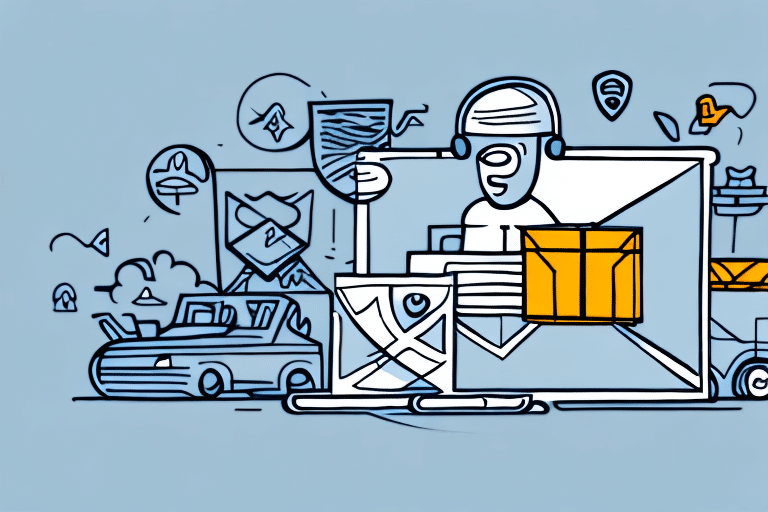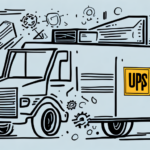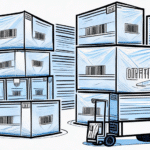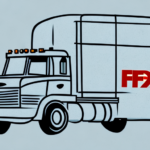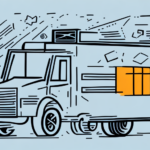Ensuring Your Packages Arrive Safely with Insured Delivery
In today's digital age, e-commerce has become an integral part of our lives. From ordering food, clothes, electronics, and even furniture, almost everything can be bought online and delivered right to our doorstep. However, during the shipping process, your items are at risk of getting lost or damaged. That's where insured delivery comes in—protecting your packages from potential damage or loss during transit.
Why Insured Delivery is Important for Your Packages
The shipping process is not always perfect. Even with all the precautions taken by delivery services, your items could be lost or damaged during transit. Without insurance, you'd have to bear the cost of replacing or repairing the items yourself. According to the UPS Safety Programs, insured delivery ensures compensation in case of loss or damage of your packages, safeguarding your investment.
Moreover, insured delivery provides peace of mind to both the sender and the recipient. The sender can rest assured that their package is protected and will be compensated in case of any mishap, while the recipient can receive their package with confidence, knowing that it has been insured and any damage or loss will be addressed.
Insured delivery is particularly beneficial for high-value items such as electronics, jewelry, or artwork. These items are more susceptible to damage or theft during transit, and without insurance, the cost of replacing them can be exorbitant. Insured delivery offers an added layer of protection, ensuring that these valuable items are delivered safely and securely.
Understanding the Risks of Shipping Packages
Shipping packages entails various risks, including loss, theft, pilferage, damage, or misdelivery. Theft or pilferage is especially concerning for high-value items, while damage can occur due to mishandling in transit or inadequate packaging. Misdelivery happens when a package is delivered to the wrong address or person. These risks can result in significant financial losses, which can be mitigated by opting for insured delivery.
Another risk associated with shipping packages is delays. Delays can occur due to weather conditions, customs clearance, or transportation issues. These delays can cause inconvenience to both the sender and the receiver, especially if the package contains time-sensitive or perishable items.
Different shipping carriers have varying policies and procedures for handling packages. Some carriers may have stricter rules on packaging and labeling, while others may offer more flexible delivery options. Researching and comparing different carriers is essential to find one that best suits your needs and budget.
How Insured Delivery Protects Your Packages from Damage or Loss
Insured delivery offers different levels of coverage depending on the type of insurance and the value of your items. In case of loss or damage, you can file a claim with the insurance provider and receive compensation based on the policy's terms. The insurance policy will cover the cost of replacing or repairing the items lost or damaged during shipping. According to the Federal Trade Commission, some insurance companies also offer additional coverage for shipping delays or missing packages.
Insured delivery is an excellent option for those shipping valuable or fragile items. With insurance coverage, you can have peace of mind knowing that your package is protected during transit. Additionally, some insurance policies may cover the cost of shipping replacement or repaired items back to you, saving you additional expenses.
It's important to note that not all items may be eligible for insurance coverage, and some insurance policies may have restrictions or exclusions. Carefully reviewing the policy terms and conditions before purchasing insurance for your shipment is recommended. By understanding your options and choosing the right insurance coverage, you can ensure that your packages are protected and arrive safely at their destination.
The Different Types of Insurance Available for Shipping Packages
There are various types of package insurance available, including carrier liability, third-party insurance, and self-insurance. Carrier liability is the basic insurance policy offered by most delivery services, covering the minimum value of your package. Third-party insurance is provided by independent insurance companies, offering more extensive coverage at a higher price. Self-insurance involves taking full responsibility for insuring your package and covering any losses yourself.
Carefully consider the value of your package and the potential risks involved in shipping before choosing an insurance option. For instance, if you are shipping a valuable item like jewelry or electronics, carrier liability may not provide sufficient coverage. In such cases, third-party insurance or self-insurance may be more appropriate.
Additionally, some delivery services offer extra insurance options, such as declared value coverage or signature confirmation. Declared value coverage allows you to declare the value of your package and purchase additional insurance to cover that amount. Signature confirmation requires the recipient to sign for the package upon delivery, providing an extra layer of security and proof of delivery.
Factors to Consider When Choosing an Insurance Policy for Package Delivery
Choosing the right insurance policy for your package delivery involves considering various factors, such as the value and type of items being shipped, the shipping distance, and the delivery service used. It's essential to weigh the cost of the insurance policy against the potential losses and to make an informed decision after reviewing the policy's terms and exclusions.
Another critical factor is the level of coverage provided. Some policies may only cover basic damages or losses, while others offer more comprehensive coverage, including theft, damage during transit, and even natural disasters. Carefully reviewing the coverage options and selecting a policy that provides adequate protection for your specific needs is crucial.
The Benefits of Using Insured Delivery Services for E-Commerce Businesses
For e-commerce businesses, shipping packages safely and efficiently is vital for ensuring customer satisfaction. Insured delivery services provide additional protection and peace of mind to customers by safeguarding their packages during transit. This not only enhances customer trust but also helps businesses maintain their reputation by ensuring timely and safe delivery of products.
Using insured delivery services can also help businesses save money in the long run. While the cost of insured delivery may be slightly higher than non-insured services, the added protection can prevent costly losses due to damaged or lost packages, leading to higher customer satisfaction and repeat business.
Additionally, insured delivery services can help businesses comply with shipping regulations and requirements. Many carriers mandate insurance coverage for packages, and using an insured delivery service ensures that businesses meet these requirements and avoid potential legal issues.
Tips for Filing a Claim with Your Package Insurance Provider
If you need to file an insurance claim, the first step is to contact the insurance provider and provide all necessary details and documents. Ensure you provide evidence of the package's value and the cost of the items lost or damaged. Keeping all receipts, invoices, or any other relevant documents that support your claim is crucial. Regularly following up with the insurance provider can help ensure a speedy resolution of your claim.
Another important tip is to be honest and accurate when providing information about the package and its contents. Providing false or misleading information can result in your claim being denied or delayed. Understanding the terms and conditions of your insurance policy, including any exclusions or limitations, is also essential.
If you encounter difficulties in filing a claim or obtaining a resolution from your insurance provider, consider seeking assistance from a consumer advocacy group or a legal professional. They can help you navigate the claims process and ensure that your rights as a consumer are protected.
Common Misconceptions About Package Insurance and How to Avoid Them
One common misconception about package insurance is that basic carrier liability coverage is sufficient for all types of packages. However, carrier liability often doesn't cover the full value of your items and may not offer protection against various risks. Another misconception is that insurance is expensive. In reality, the cost of insurance is relatively low compared to the potential losses of your items. Always read the policy carefully to understand the exclusions, limitations, and deductibles before opting for an insurance policy.
Many believe that insurance is only necessary for expensive items. However, even packages containing moderately priced items should be considered for insurance, as accidents can occur during transit, leading to significant financial losses without coverage.
It's also important to recognize that not all insurance policies are created equal. Some policies may have exclusions for certain types of items or may not cover specific types of damage. Conduct thorough research to find a policy that fits your specific needs, and don't hesitate to ask questions if you're unsure about any aspects of the coverage.
How to Check if Your Package Delivery Service Offers Insurance Coverage
Most package delivery services offer carrier liability insurance as a standard policy. However, for additional coverage, you need to check with the delivery service or a third-party insurance provider. Before choosing a delivery service, always review their insurance policies and compare them with other providers to select the best option for your needs.
It's important to note that carrier liability insurance typically only covers the cost of the package itself, not any additional contents inside. If you're shipping valuable or fragile items, investing in additional insurance coverage is advisable to protect your shipment. Some delivery services offer extra insurance options for an additional fee, while others may require you to purchase third-party insurance. Always read the fine print and understand the terms and conditions of any insurance policy before shipping your package.
The Future of Insured Delivery: Trends and Innovations in Package Protection
Innovations in package tracking and monitoring technologies are revolutionizing the shipping industry. Developments such as real-time tracking, IoT-enabled sensors, and blockchain for secure transactions are making it easier for customers to track their packages and for delivery services to mitigate risks and ensure timely delivery. The future of insured delivery lies in leveraging these technologies to provide more efficient, effective, and accurate package protection.
Insured delivery remains an essential service for anyone shipping packages, whether for personal or business purposes. It provides peace of mind and protects against potential losses. By understanding the different types of insurance available, selecting the right policy, and following proper procedures when filing a claim, you can ensure that your packages arrive safely at their destination.















